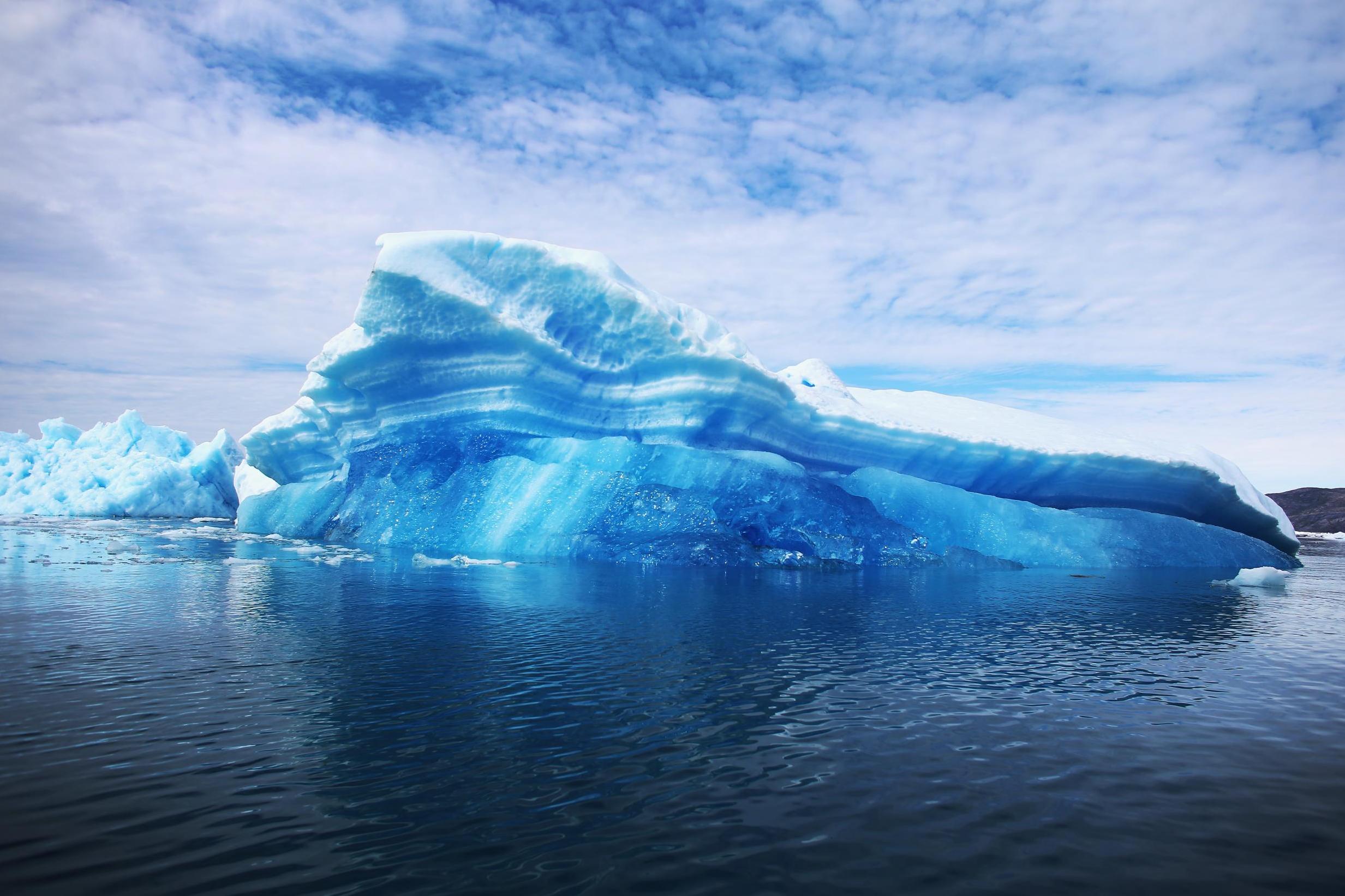Greenland’s coastal glaciers are ‘doomed’ after hitting tipping point 20 years ago
Much of the ice on the fringes of the frozen island 'will likely disappear in the near future', scientist says

The glaciers and ice caps on coastal Greenland are “doomed” to melt after reaching a tipping point 20 years ago, according to a new study.
The vast Greenland ice sheet contains the second largest amount of land ice on the planet, after Antarctica.
If it was all to melt, sea levels would rise by more than seven metres (about 24 feet), which would flood low-lying cities across much of the world.

The new research helps explain why the coastal ice, which would only raise sea levels by 3.8cm by 2100, has been melting with alarming speed.
Professor Ian Howat, a glaciologist at Ohio State University, said: “These peripheral glaciers and ice caps can be thought of as colonies of ice that are in rapid decline, many of which will likely disappear in the near future.
“In that sense, you could say that they’re ‘doomed’. However, the ice sheet itself is still not ‘doomed’ in the same way.
“The vast interior ice sheet is more climatologically isolated than the surrounding glaciers and ice caps.
“Also, since this ‘tipping point’ was reached in the late 90s before warming really took off, it indicates that these peripheral glaciers are very sensitive and, potentially, ephemeral relative to the timescales of response of the ice sheet.”
Before 1997, meltwater was trapped by an area of snow called firn, where it would trickle down to the bottom layer, freeze and become ice, enabling the glaciers to grow.
But by that year so much meltwater was being produced that the firn became saturated and froze into ice. Since then, most of the meltwater has simply flowed over the top into the sea.
The study, described in a paper in the journal Nature Communications, provided “more evidence of rapid change and how it happens”, Professor Howat said.
The vast interior ice sheet could lose mass in the same way, but to a much lesser degree than the isolated glaciers and ice caps on the coast.
The paper said that before 1997 the growth of ice in the coastal areas had been only “marginally negative”.
But after 1997 there had been a significant “acceleration” in the loss of ice which had been “almost exclusively driven by increased run-off, while precipitation remains constant”.
“It thus appears that the mass balance of Greenland’s [coastal glaciers and ice caps] crossed a tipping point in 1997, implying eventual long-term loss of the firn layer’s refreezing capacity,” the paper said.
Join our commenting forum
Join thought-provoking conversations, follow other Independent readers and see their replies
Comments
Bookmark popover
Removed from bookmarks